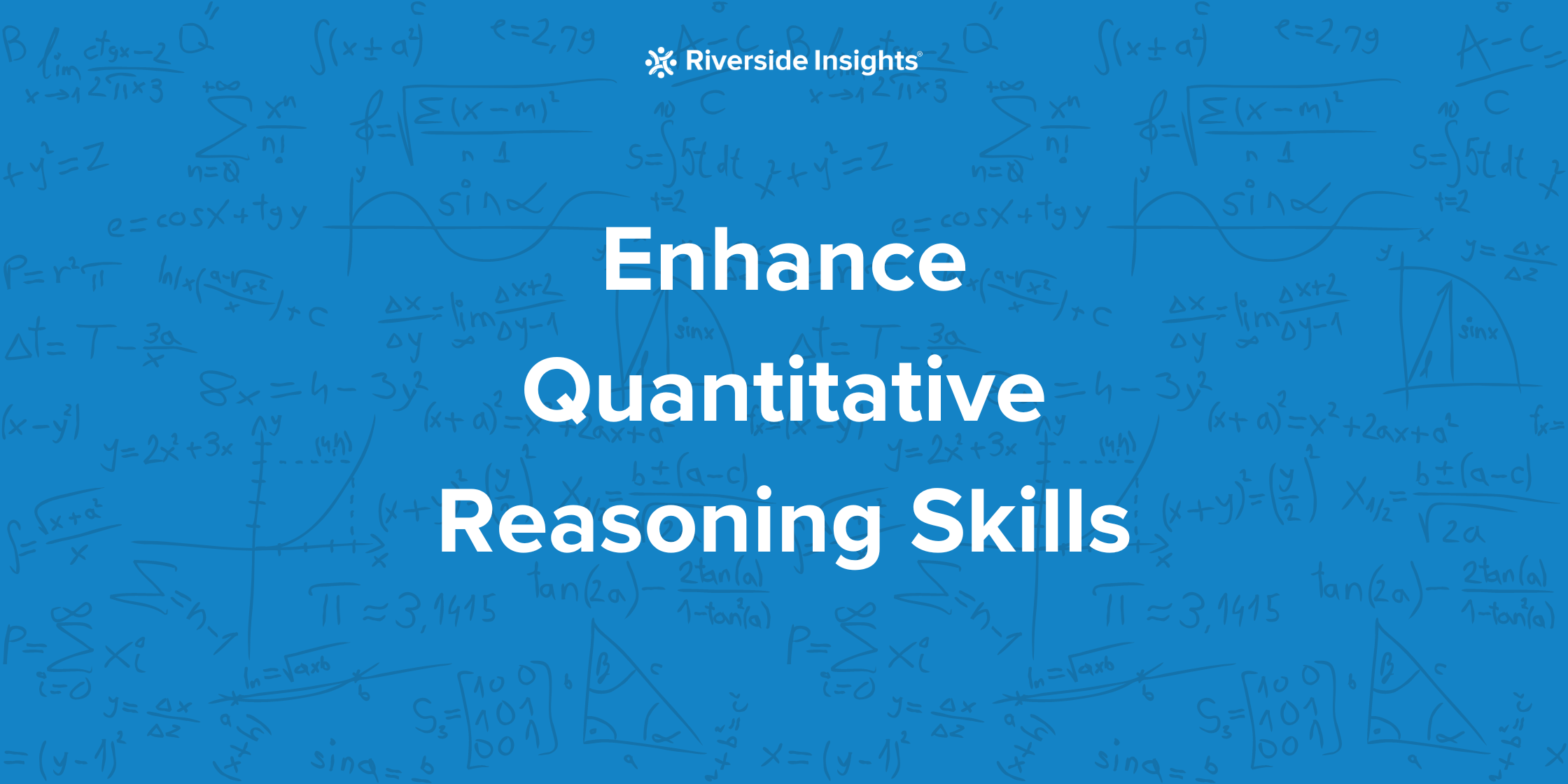Enhance Quantitative Reasoning Skills

Students in all grade levels have varying levels of readiness that require differentiation of instruction. However, some states like New York and California are trying to dismantle advanced math classes in the name of equity, claiming that systems of “tracking” negatively impact those students in lower-level classes. While this initiative is well-intentioned, most educators agree that holding back those students who are ready for more fails to enable adequate growth for advanced learners.
How do we adequately serve our advanced math learners at the district level? One option is providing math acceleration pathways for students with high quantitative ability. Acceleration allows students to access curriculum beyond their current class or grade level. For some students, that is sufficient to provide the appropriate level of challenge. Other students need the pace of instruction and learning to be accelerated, too. Infusing math curriculum with opportunities for students to apply their learning to real-world situations also results in increased problem solving and critical thinking skills and supports advanced learners.
At the campus level, master schedules can be structured to allow for clustering for the highest performing math students so they can receive instruction at their level.

However, while addressing the needs of high-ability students at the district and campus level is helpful, it is in the math classroom where the real impact occurs. The teacher has the opportunity to provide students with the appropriate amount of rigor to ensure growth using grouping strategies, formative assessment strategies, and instructional strategies. It is important for campus administrators to provide their teachers a safe environment and supportive systems to try new strategies in their attempt to differentiate for their learners.
One such strategy involves using the CogAT Ability Profile™ as a mechanism for grouping students and devising differentiated instruction. The Ability Profiles score provides guidance for how to tap into students’ areas of strengths to bolster learning across the curriculum. When a student is above average or higher in quantitative reasoning, the associated instructional strategies point toward more critical thinking and problem solving.
For example, an Ability Profile of 7B and 8B (Q+) denotes a student who is above average overall with a specific area of strength in quantitative reasoning and problem solving. Guidance for teaching this student includes the following:
Build on Strength. Because these students have above-average reasoning abilities, they tend to benefit most when allowed to discover relationships for themselves. Guided discovery methods work better with such students than more structured teaching methods. However, teachers should watch for opportunities to allow greater choice for students who would enjoy more freedom to explore.
How might that look in a classroom?
Grouping Strategies:
- Flexible Grouping: Provide opportunities for flexible grouping within and across classrooms to reduce the planning for each teacher and allow them to meet students where they are.
- Center-based Learning: Give groups tasks that encourage both learning and application to challenge all learners while allowing the teacher opportunities to work with small groups of students who need more support. This strategy promotes student choice and room to explore.
Assessment Strategies:
- Pre-Assess: Use a pre-assessment at the beginning of a unit of study to provide valuable information to the teacher. A pre-assessment can inform flexible groups for instruction or for center-based learning. The data from a pre-assessment can also help teachers maximize instruction time by illustrating which skills students have already mastered.
- Formative Assessment: Teachers should use formative assessments to monitor and adjust the students' learning targets.
Instructional Strategies:
- Gap Analysis: Be sure to check for basic math skill gaps. High-ability math learners learn without much repetition nor much modeling. Therefore, they may miss some basic skills because they understood the math concept so quickly. Later, those gaps can create frustration or stumbling blocks to grasping new computations.
- Depth and Complexity: Leverage the Depth and Complexity framework and suite of resources to empower students with critical thinking and problem-solving strategies that they can apply independently in new situations and challenges.
- Mistake Analysis: Challenge students to find mistakes in problems you give them. While they know how to solve problems, finding a mistake will take them to a higher level of critical thinking by discovering relationships for themselves.
- More Wrong: Colin Seale, Founder and CEO of ThinkLaw, shares one of his favorite strategies. He divides the class into two groups and assigns each one a problem with a wrong solution. Each group’s job is to convince him their problem is most wrong. This is another way to provide discovery options as well as allow students with strong verbal skills to utilize them in math class.
Even if acceleration is not an option for your students at this time, the strategies above - and any they spark - will help to increase engagement for all students while providing the necessary challenge for the more advanced math students.



-1.png)